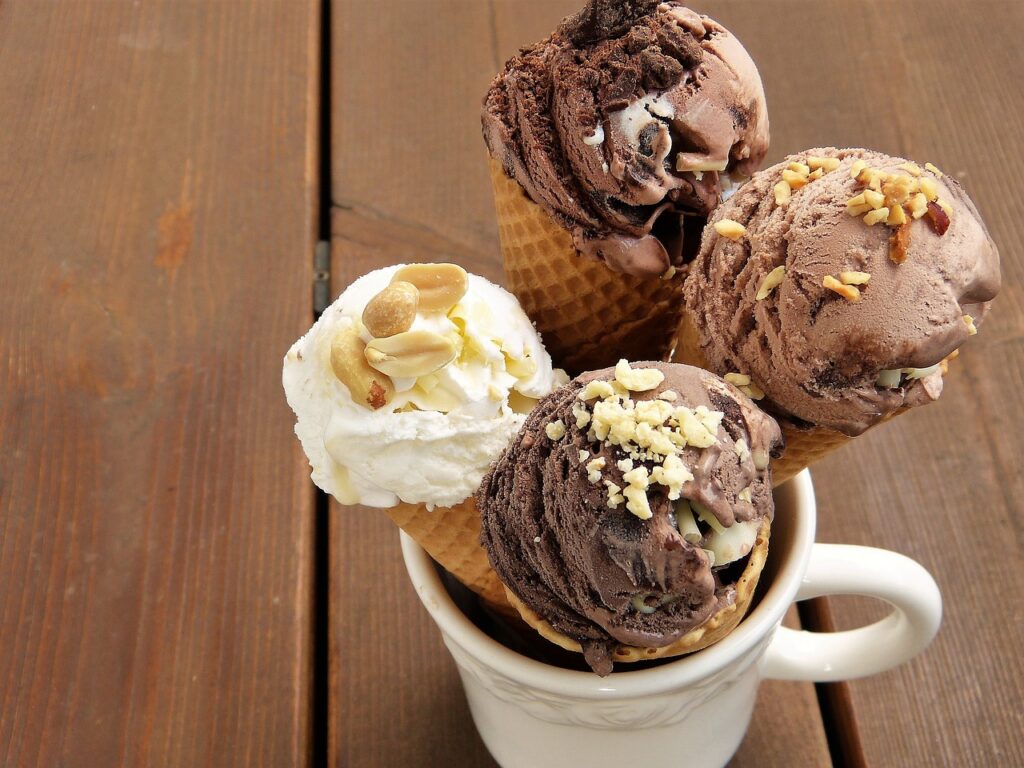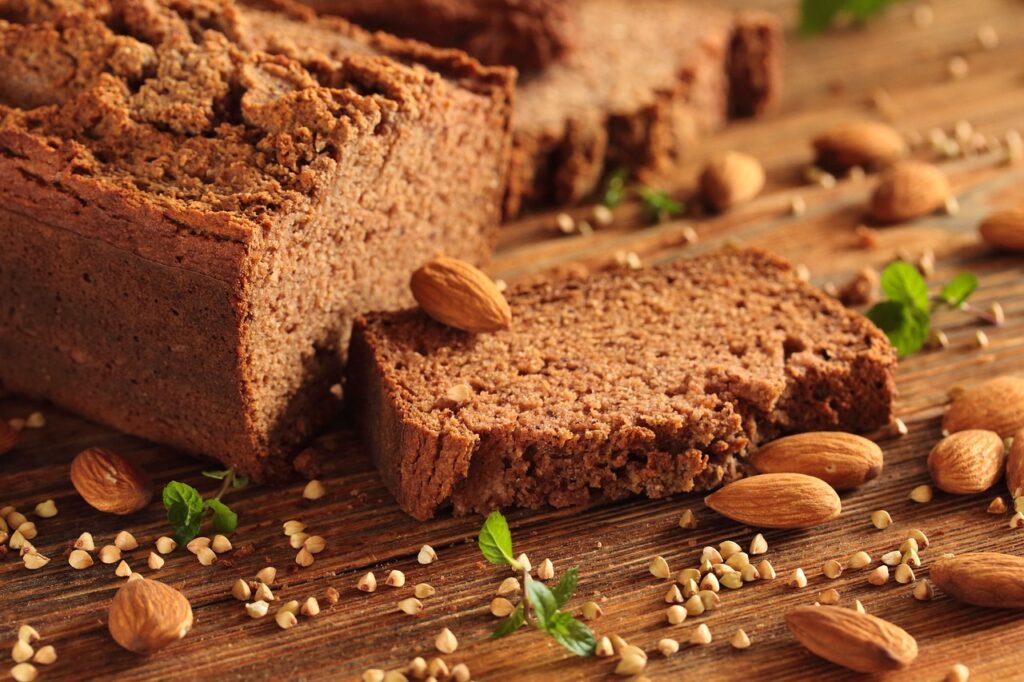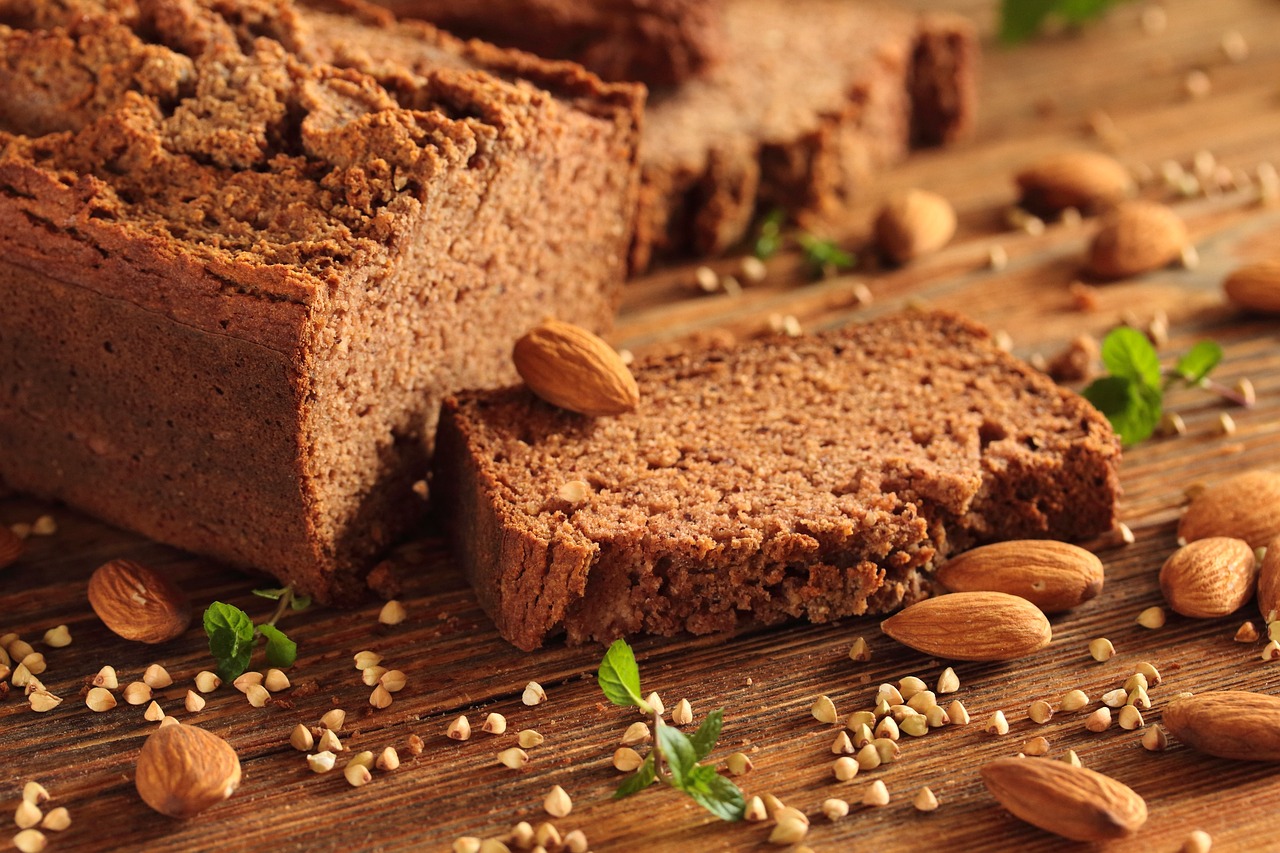Get ready to embark on a delicious journey through the world of gluten-free baking! We understand that finding tasty treats without wheat can be a challenging task. That’s why we have compiled a treasure trove of mouthwatering recipes just for you. At Tastepan.com, our mission is to elevate your culinary adventures and provide you with step-by-step instructions, ingredient lists, and expert tips to create delectable gluten-free goodies. Whether you are a seasoned baker or a beginner, our curated collection of recipes will surely satisfy your cravings and delight your taste buds. Say goodbye to the limitations of wheat and get ready to indulge in gluten-free delights that are both tasty and satisfying.

Understanding Gluten-Free Baking
Gluten is a protein found in grains such as wheat, rye, and barley. It provides elasticity and structure to baked goods, giving them their classic texture. However, some people have dietary restrictions or intolerances to gluten, which necessitates the need for gluten-free baking.
What is Gluten?
Gluten is a complex protein that is made up of two components: glutenin and gliadin. When these proteins are combined with water, they form a sticky network that gives dough its elasticity. This network traps air bubbles and gives baked goods their fluffy texture.
Why Go Gluten-Free?
There are several reasons why individuals choose to follow a gluten-free diet. Some people have celiac disease, an autoimmune disorder where consuming gluten can damage the small intestine. Others have non-celiac gluten sensitivity, which causes digestive issues and other symptoms when gluten is consumed. Additionally, some people choose to go gluten-free for personal health reasons or to explore a different dietary lifestyle.
Challenges of Gluten-Free Baking
Gluten-free baking presents unique challenges compared to traditional baking. Without gluten, it can be difficult to achieve the same texture and structure in baked goods. Gluten-free flours are often denser and have less elasticity, resulting in a heavier end product. The absence of gluten also affects the rise and moisture retention in baked goods. However, with the right ingredients and techniques, it is possible to create delicious gluten-free treats.
Essential Gluten-Free Baking Ingredients
When it comes to gluten-free baking, having the right ingredients is crucial to achieve the desired results. Here are some essential components for successful gluten-free baking:
Gluten-Free Flours
There are numerous gluten-free flours available, including but not limited to rice flour, almond flour, coconut flour, and sorghum flour. These alternative flours can be used alone or in combination to mimic the texture and flavor of traditional wheat flour. Experimenting with different flour blends can help achieve the best results for specific recipes.
Binding Agents
Since gluten provides structure, it is necessary to use binding agents in gluten-free baking. Common options include xanthan gum, guar gum, and psyllium husk powder. These agents help replace the binding properties that gluten provides, resulting in a more cohesive final product.
Leavening Agents
Leavening agents play a crucial role in helping gluten-free baked goods rise. Baking powder, baking soda, and yeast are commonly used leavening agents. They react with other ingredients to create carbon dioxide bubbles, which cause the dough or batter to expand and lighten during baking.
Sweeteners
Sweeteners are essential to add flavor and sweetness to gluten-free baked goods. Options such as granulated sugar, brown sugar, honey, and maple syrup can be used. It is important to note that some sweeteners, like maple syrup or honey, may affect the texture and moisture content of the baked goods, requiring adjustments to other ingredients or ratios.
Flavor Enhancers
To enhance the taste of gluten-free treats, flavor enhancers such as vanilla extract, cocoa powder, spices, and citrus zest can be added. These ingredients help to elevate the overall flavor profile of the baked goods, creating a more enjoyable eating experience.

Converting Recipes to Gluten-Free Versions
Converting traditional recipes to gluten-free versions requires careful consideration of ingredient substitutions and adjustments. Here are some key factors to keep in mind:
Understanding Ratios and Proportions
Gluten-free flours often have different moisture absorption rates and textures compared to wheat flour. Understanding how these flours behave and adapting the ratios and proportions accordingly is essential. It may be necessary to increase or decrease the amount of liquid or fat used to achieve the desired consistency.
Substituting Wheat Flour
When converting recipes, wheat flour can often be replaced with gluten-free flours or flour blends. However, it is important to note that different types of flour have distinct properties and flavors. Experimentation and adjusting the ratios may be necessary to achieve the desired texture and taste.
Adjusting Liquid and Fat Content
Gluten-free flours may require different amounts of liquids and fats compared to wheat flour. If the batter or dough appears dry or crumbly, it may be necessary to add additional liquid or fat. Conversely, if the mixture is too wet, additional flour or thickeners may be needed to achieve the right consistency.
Replacing Gluten-Based Binding Agents
Xanthan gum or guar gum can be used as substitutes for gluten-based binding agents. These ingredients help improve the texture and structure of gluten-free baked goods. The amount required will vary depending on the recipe, so it is important to follow the recommended guidelines or experiment to find the right balance.
Gluten-Free Breads and Muffins
If you’re craving a warm, freshly baked loaf of bread or a delightful batch of muffins, don’t worry – gluten-free options are available!
Classic Gluten-Free Bread Recipe
Making gluten-free bread at home can be a rewarding experience. A classic recipe often includes a combination of gluten-free flours, yeast, eggs, and oil. The dough is mixed, allowed to rise, and then baked to golden perfection. With careful ingredient selection and proper technique, you can enjoy a delicious loaf of gluten-free bread.
Delicious Gluten-Free Muffins
Gluten-free muffins can be just as moist and flavorful as their wheat-based counterparts. By incorporating gluten-free flours, fresh fruits, eggs, and an appropriate leavening agent, you can create a delightful batch of muffins. From blueberry to chocolate chip, the possibilities are endless.
Baking Tips for Light and Fluffy Texture
To achieve a light and fluffy texture in gluten-free breads and muffins, several baking tips can be helpful. Mixing the batter or dough properly, allowing sufficient resting time for the ingredients to combine, and using the correct leavening agents are crucial. Additionally, using a combination of gluten-free flours and binding agents can contribute to a softer and more delicate texture.

Decadent Gluten-Free Cakes and Cupcakes
Who says gluten-free desserts can’t be indulgent? Treat yourself to a decadent gluten-free cake or a batch of mouthwatering cupcakes. With the right ingredients and techniques, you can create desserts that are just as delicious as their gluten-filled counterparts.
Indulgent Chocolate Cake
Rich, moist, and chocolaty – gluten-free chocolate cake can be an absolute delight. By incorporating gluten-free flours, cocoa powder, eggs, oil, and a leavening agent, you can create a cake that is both indulgent and gluten-free. Top it with your favorite frosting or a sprinkle of powdered sugar for an extra touch of sweetness.
Moist Vanilla Cupcakes
For those who prefer a classic vanilla flavor, gluten-free vanilla cupcakes are a perfect choice. These cupcakes can be made using a combination of gluten-free flours, sugar, eggs, oil, and vanilla extract. Decorate them with colorful frosting, sprinkles, or fresh fruit for a visually appealing treat.
Frosting and Decoration Options
Gluten-free dessert toppings and decorations are widely available, making it easy to add those finishing touches to your cakes and cupcakes. From gluten-free frosting to edible decorations, you can explore a variety of options to suit your preferences. Get creative and let your desserts shine!
Delicious Gluten-Free Cookies and Brownies
There’s nothing quite like a warm batch of freshly baked cookies or brownies straight from the oven. With a few modifications, you can enjoy gluten-free versions of these beloved treats.
Chewy Gluten-Free Chocolate Chip Cookies
Chewy gluten-free chocolate chip cookies are bound to satisfy any cookie lover’s cravings. Using a combination of gluten-free flours, sugar, eggs, butter, and chocolate chips, you can create cookies that are soft, chewy, and packed with flavor. Don’t forget to enjoy them with a tall glass of milk!
Fudgy Gluten-Free Brownies
If you’re a fan of rich and fudgy brownies, going gluten-free doesn’t mean you have to miss out. By substituting wheat flour with gluten-free alternatives, such as almond flour or a gluten-free flour blend, you can enjoy brownies with the same desirable texture and taste. Add some walnuts or extra chocolate chunks for an extra indulgent twist.
Creative Flavor Variations
While classic chocolate chip cookies and brownies are delicious, there’s no harm in experimenting with different flavors. Consider adding dried fruits, nuts, or flavor extracts to your cookie or brownie batter to create unique taste combinations. Don’t be afraid to get creative and have fun with your gluten-free baking!

Gluten-Free Pies, Tarts, and Pastries
Craving a buttery pie crust or a delicate pastry? Gluten-free options can still satisfy those desires.
Flaky Gluten-Free Pie Crust
Making a flaky gluten-free pie crust requires finesse and the right combination of ingredients. A blend of gluten-free flours, butter, cold water, and a binding agent can be used to create a crust that is tender and golden. Fill it with your favorite fruits or savory fillings to complete the pie.
Savory Gluten-Free Tart Recipes
Savory gluten-free tarts can be a delightful addition to your culinary repertoire. By using a gluten-free flour blend, eggs, butter, and flavorful fillings, you can create savory tarts with a crisp crust and a delicious filling. From herb and cheese tarts to vegetable medleys, the possibilities are endless.
Buttery Gluten-Free Pastries
Buttery gluten-free pastries can be a luxurious treat. Utilizing gluten-free flours, cold butter, and a binding agent, you can create a pastry dough that is delicate and flaky. Use it as a base for fruit turnovers, cheese twists, or cream-filled pastries for a delightful gluten-free indulgence.
Gluten-Free Dessert Bars and Squares
If you’re looking for a dessert that is easy to make and perfect for sharing, gluten-free bars and squares are an excellent choice.
Nutty Granola Bars
Making your own gluten-free granola bars allows you to customize the flavors and textures to your liking. Gluten-free oats, nuts, seeds, sweeteners, and binding agents are the key components of these delicious and satisfying treats. Enjoy them as a quick snack or a post-workout boost of energy.
Scrumptious Lemon Bars
Scrumptious lemon bars are a tangy and refreshing gluten-free option. Utilizing a gluten-free flour blend, eggs, sugar, lemon juice, and zest, you can create a vibrant and zesty dessert. Dust them with powdered sugar and serve them chilled for a delightful treat on a warm day.
Tips for Perfect Layers and Cuts
When making gluten-free dessert bars and squares, achieving perfect layers and clean cuts can be challenging due to the absence of gluten. To ensure even layers, use a small offset spatula or the back of a spoon to spread the batter or filling evenly. For clean cuts, refrigerate the bars before slicing and use a sharp knife.

Exploring Gluten-Free Baking Mixes
If you’re short on time or prefer the convenience of pre-made mixes, there are numerous gluten-free baking mixes available in stores. While they provide a quick solution, here are some considerations:
Convenience of Pre-Made Mixes
Gluten-free baking mixes offer convenience, as they often contain a blend of gluten-free flours and other necessary ingredients. These pre-mixed combinations can save you time and effort. However, it is important to read the labels and select reputable brands that are known for their quality.
Quality and Flavor Considerations
While pre-mixed gluten-free baking mixes can be convenient, the quality and flavor may vary. It’s essential to experiment with different brands and varieties to find the ones that meet your expectations. Reading reviews and seeking recommendations can also help you make an informed choice.
Enhancing Mixes with Personal Twists
If you choose to use pre-made gluten-free baking mixes, you can still personalize them to suit your taste preferences. Adding extra spices, flavor extracts, nuts, or dried fruits can help enhance the flavor and texture of the final product. Experimenting with mix-ins and toppings can make your baked goods truly unique.
Gluten-Free Baking Tips and Tricks
To ensure successful gluten-free baking, here are some tips and tricks that can elevate your gluten-free creations:
Preventing Dryness and Crumbliness
Gluten-free baked goods tend to be drier and more crumbly than their gluten-filled counterparts. To combat dryness, try incorporating ingredients that add moisture, such as applesauce, yogurt, or mashed bananas. It is also essential to store baked goods in airtight containers to maintain their freshness.
Adding Moisture to Gluten-Free Baked Goods
If you notice that your gluten-free baked goods are dry, consider adjusting the liquid content by adding a little extra liquid, such as milk or water, to the batter or dough. Be cautious not to add too much, as excessive moisture can negatively affect the texture and structure.
Improving Texture and Rise
To improve the texture and rise of gluten-free baked goods, try incorporating additional leavening agents, such as baking powder or baking soda. These agents can help create air bubbles and give the baked goods a lighter and more desired consistency.
Overcoming Taste Challenges
Gluten-free flours often have distinct flavors that may differ from traditional wheat flour. To overcome any taste challenges, experiment with flavor enhancers, such as vanilla extract, spices, or citrus zest. These additions can help balance and enhance the overall taste of your gluten-free baked goods.
Gluten-free baking may require some trial and error, but with patience and experimentation, you can create delicious treats that everyone can enjoy. Whether you’re following a gluten-free diet or simply exploring new culinary possibilities, gluten-free baking opens up a world of tasty treats without wheat. Happy baking!

